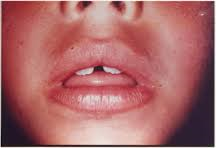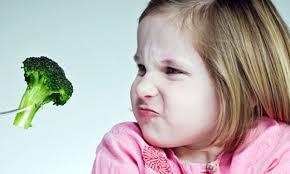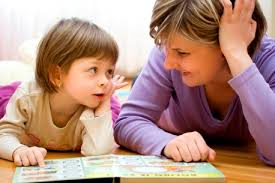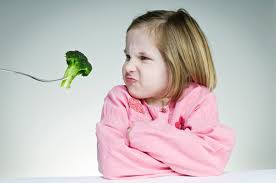Is My Preschooler at Risk for Reading and Writing Difficulties?
Is My Preschooler at Risk for Reading and Writing Difficulties?
Children with Developmental Language Disorder (DLD) and those with Speech Sound Disorders (SSDs) are at an increased risk for future reading and writing challenges. This risk becomes apparent when preschoolers qualify for speech and language services through their school district or private providers. At this stage, it is recognized that the child has a weakness in the Oral Language domain. It's important to note that preschoolers can exhibit both DLD and SSD simultaneously.
What is Oral/Spoken Language?
Oral language is the system of spoken communication, including the ability to listen, understand, and express thoughts and sentences. Children with Developmental Language Disorder have weaknesses in oral language, which often presents as challenges in the following areas:
-
Following directions
-
Retrieving and learning a range of vocabulary words
-
Understanding or recalling what has been said or read to them
-
Recognizing and producing speech sounds correctly
-
Using and understanding grammatical structures (word order)
-
Using words and sentences to express meaning
-
Generating a fluent and logical story verbally (e.g., talking about their day or retelling a short picture book)
As speech-language pathologists, we work tirelessly to strengthen these spoken language skills during preschool years, preparing children for the introduction of written language.
What is Written Language?
Written language involves using written symbols (letters and words) to communicate ideas. It has two aspects:
-
Receptive: Understanding written words, sentences, and texts (Reading).
-
Expressive: Using letters, words, and sentences to express thoughts and ideas (Spelling/Writing). It includes spelling, grammar, sentence structure, and organization.
Early reading and spelling skills are built on the foundation of strong speech and language abilities. These abilities serve as an extension of oral language skills.
How Can a Language Disorder Impact Written Language?
When children struggle with expressing and understanding language (syntax, phonology, morphology, semantics/vocabulary, and pragmatics) at the spoken level, they often encounter similar challenges with reading and writing. These challenges may include:
-
Struggling to derive meaning from the text.
-
Difficulty comprehending passages with dense vocabulary, particularly if they lack background knowledge or have decoding issues.
-
Difficulty picking up on the author’s tone and nuance.
-
Missing tense markers while reading (e.g., "bake" vs. "baked"), which can impact meaning.
-
Struggling to write about what they read in an organized manner with relevant elements.
What is a Speech Sound Disorder?
Speech sound disorders refer to difficulties in accurately producing speech sounds. These errors can be motor-based (articulation or praxis) or phonological/linguistic in nature. Children with phonological errors often simplify adult speech patterns beyond the typical age. They may delete, substitute, or distort sounds or syllables, which negatively impacts clarity and communication.
Persistent errors can be consistent with younger children’s typical patterns or more idiosyncratic (e.g., leaving off the first sound in words like “cat”). Phonological disorders reflect weaknesses in sound awareness, which directly affect literacy. Spelling and reading are linguistic skills that rely on sound processing.
How Can a Speech Sound Disorder Impact Written Language?
Reading and writing are linguistic processes that depend on several brain systems working collaboratively. One key part of this system is the phonological loop, which helps students discriminate sounds and hear sounds and word parts. The phonological loop is part of working memory.
Children with unclear sound representations may:
-
Confuse similar sounds while reading and spelling (e.g., sh/s, l/w/r, th/f).
-
Spell words as they “say them,” with errors that reflect how they process sounds.
-
Omit sounds when spelling (e.g., “lamp” becomes “lap” or “stop” becomes “top”) and struggle to distinguish all the sounds in a word.
-
Leave off word endings that provide meaning (e.g., plurals, tense markers, possessive ‘s’).
Working Memory
Children with Speech Sound Disorders and Developmental Language Disorder rely heavily on their working memory for reading and writing tasks. Working memory helps us:
-
Hold words and sentence parts in memory while extracting meaning.
-
Rapidly recall sound-symbol correspondences.
-
Organize ideas and recall spelling, grammar, and punctuation all at once.
Children with working memory weaknesses tend to:
-
Lose track of their reading or lose their place.
-
“Re-sound” out the same word multiple times on the same page.
-
Forget accepted spelling patterns while attempting to spell words (e.g., phonetic spelling).
-
Write disorganized or incomplete thoughts.
-
Appear distracted or give up quickly when reading or writing.
Conclusion
It is essential to monitor your child’s reading and spelling development as they progress through kindergarten. Communicate directly with their teacher about their performance, share concerns with your school district, and reach out to a speech-language pathologist specializing in literacy if necessary. If you suspect your child is struggling, seek support to address the gap before it grows too large.
Lori Wasserman-Rizzo
ASHA Certified Speech-Language Pathologist
Director of Huntington Speech and Feeding
Specializing in speech, language, feeding, and literacy development
Located in Centerport, New York




 Is your child a picky eater? Do you worry about your child’s intake or resistance to certain foods? Does the dinner table become a battlefield? Are you and your child stressed during meals?
Is your child a picky eater? Do you worry about your child’s intake or resistance to certain foods? Does the dinner table become a battlefield? Are you and your child stressed during meals?


 As a seasoned speech-language pathologist I am often asked what toys encourage speech and language development. Today I would like to share my 10 tips for selecting toys as well as my top 10 toys for toddlers and preschoolers. Maybe this will give you some ideas for holiday shopping this year!
As a seasoned speech-language pathologist I am often asked what toys encourage speech and language development. Today I would like to share my 10 tips for selecting toys as well as my top 10 toys for toddlers and preschoolers. Maybe this will give you some ideas for holiday shopping this year!
 It is sometimes difficult and anxiety provoking to determine why our kids are pushing away certain foods or even resisting coming to the table. Our internal dialogue tells us, "Maybe he's eating too much sugar", "Maybe he is teething", "Maybe he's tired", "Maybe this is typical for his age". There is clear information regarding this specific topic in current research so I will share this infomation along with my clinical experiece over the years working with this population.
It is sometimes difficult and anxiety provoking to determine why our kids are pushing away certain foods or even resisting coming to the table. Our internal dialogue tells us, "Maybe he's eating too much sugar", "Maybe he is teething", "Maybe he's tired", "Maybe this is typical for his age". There is clear information regarding this specific topic in current research so I will share this infomation along with my clinical experiece over the years working with this population.